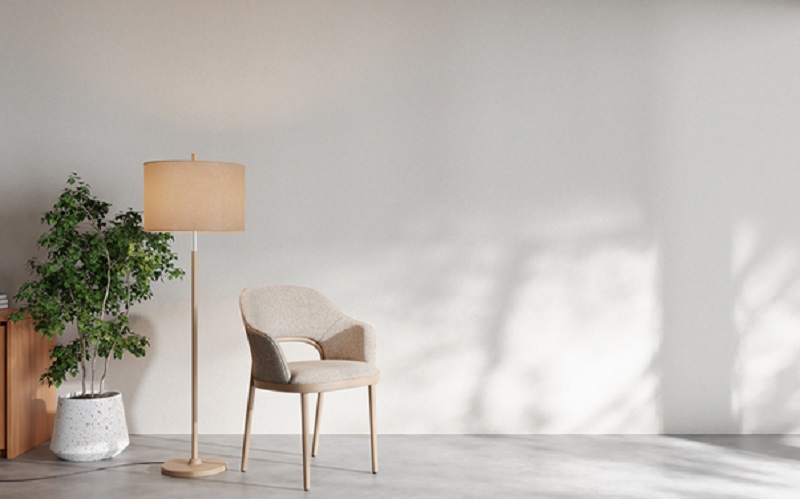
In an industry preoccupied with visuals and tangible details, silence rarely receives the spotlight. Yet silence: strategic, deliberate, and well-placed can significantly shift the trajectory of any interior design project. In the context of residential interior design, silence isn’t just an absence of sound. It’s a design ethos: a calculated quietness in layout, tone, and intention that allows the inhabitant to breathe, reset, and truly live in their space.
Here’s how using silence as a creative and functional strategy can lead to surprising and powerful transformations in interior design residential projects.
1. Creates Breathing Room in Overdesigned Environments
In homes where visual clutter accumulates without notice, silence introduces calm. This doesn’t mean stripping rooms down to bare walls. Rather, it’s about restraint: limiting decorative noise to let key elements shine. A silent corner in a living room (a neutral-toned armchair near soft drapes) can hold more emotional weight than an entire gallery wall. Clients often respond better to spaces that don’t constantly demand their attention.
2. Highlights the Power of Negative Space
Negative space, when used intentionally, becomes active. In residential interior design, it’s easy to fall into the trap of ‘filling’: filling walls, surfaces, and shelves. Silence pushes against that urge. Empty space becomes a meaningful space. It reframes how people perceive the area and what they prioritise within it. This strategy adds quiet confidence to interiors that speak softly but purposefully.
3. Allows Function to Lead Aesthetic Choices
Silent design leans into clarity. Instead of following aesthetic trends without question, silence asks: does this serve the way the client lives? A kitchen layout, for instance, might benefit from eliminating flashy features in favour of a clean, navigable work triangle. The result feels quieter but far more efficient. In this case, silence makes way for the function to drive form.
4. Encourages Emotional Connection to Space
Rooms can echo the chaos or calm of their inhabitants. When a space has been designed with silence in mind, it often fosters a deeper emotional connection. Subdued palettes, soft transitions between rooms, and thoughtful lighting shifts can influence mood. Silence here functions as a kind of emotional conductor, allowing inhabitants to reconnect with themselves, their routines, and each other.
5. Enhances the Impact of Sound and Texture
Interestingly, when everything isn’t shouting for attention, subtle elements become louder. A woven rug, the gentle hum of a floor lamp, or the texture of linen cushions all stand out more vividly when silence is part of the design language. In interior design residential contexts, this offers a more sensorial experience, which interior designers note clients increasingly value. They may not always know why they love a room, but they feel it.
6. Opens Space for Light to Speak
Natural light benefits from a quieter room. Without excessive visual noise, light can shift throughout the day, casting shadows and changing the room’s character. Silent interiors embrace this dialogue. Strategically placed windows, sheer blinds, and unfussy wall colours allow light to carry space, creating movement without ever feeling rushed or overwhelming.
7. Signals Confidence in Design Decisions
Noise in design sometimes emerges from uncertainty, a safety blanket of extra features to mask a lack of clarity. Silence requires certainty. It reveals a designer’s ability to make decisive, pared-down choices that hold their own. Clients often find this confidence reassuring. It tells them that their space has been curated, not crammed.
8. Encourages Slower Living
Residential interior design should support lifestyles, not race ahead of them. Silent spaces invite users to slow down. A silent bedroom layout, for example, prioritises symmetry, breathable pathways, and uncluttered surfaces, which can naturally support better sleep and reduced anxiety. The subtle strategy of silence translates directly into quality of life.
9. Supports Long-Term Flexibility
Trends come and go, but silent design elements tend to age gracefully. A calm palette, a restrained materials list, and versatile layouts adapt more easily over time. In family homes especially, this gives occupants room to grow and change without constant redesign. Silence, in this case, acts as future-proofing.
10. Helps Clients Hear Their Voice
Finally, silence gives the client space to express themselves. Instead of a home telling them who they should be, it allows them to speak into the space with their rhythm, habits, and quirks. In a process often dominated by the designer’s hand, this is a powerful shift. It prioritises listening, and that, ultimately, creates homes that truly reflect their inhabitants.
Silence is not about emptiness. It’s about control, consideration, and creative restraint. By weaving it into the foundations of residential interior design, the designer builds something more sustainable: a space that endures beyond surface appeal and continues to serve its purpose with quiet integrity.
Contact Hoft Interior to explore how silence could reshape your next interior project.